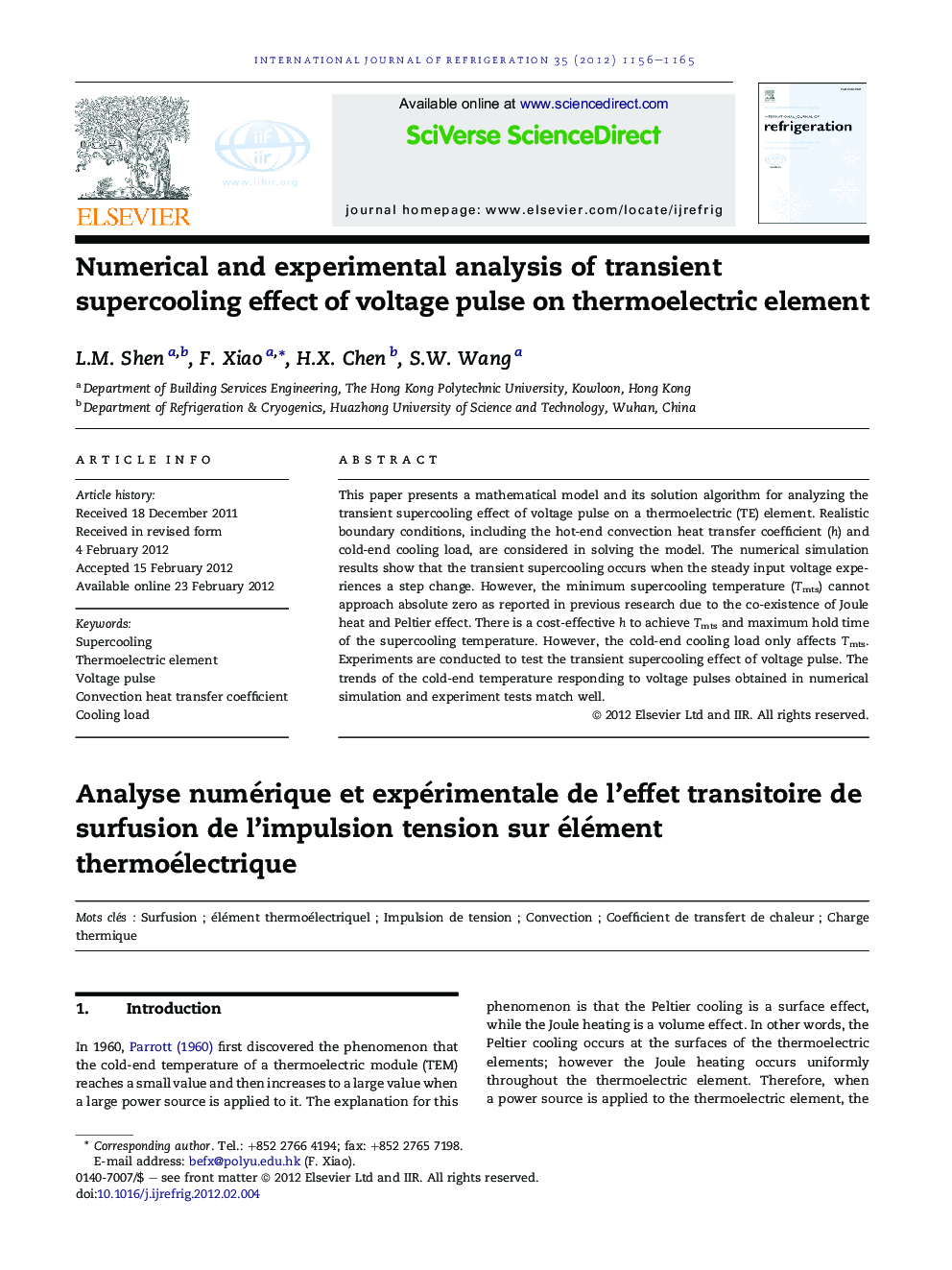| Article ID | Journal | Published Year | Pages | File Type |
|---|---|---|---|---|
| 790376 | International Journal of Refrigeration | 2012 | 10 Pages |
This paper presents a mathematical model and its solution algorithm for analyzing the transient supercooling effect of voltage pulse on a thermoelectric (TE) element. Realistic boundary conditions, including the hot-end convection heat transfer coefficient (h) and cold-end cooling load, are considered in solving the model. The numerical simulation results show that the transient supercooling occurs when the steady input voltage experiences a step change. However, the minimum supercooling temperature (Tmts) cannot approach absolute zero as reported in previous research due to the co-existence of Joule heat and Peltier effect. There is a cost-effective h to achieve Tmts and maximum hold time of the supercooling temperature. However, the cold-end cooling load only affects Tmts. Experiments are conducted to test the transient supercooling effect of voltage pulse. The trends of the cold-end temperature responding to voltage pulses obtained in numerical simulation and experiment tests match well.
► We present a mathematical model of TE element with realistic boundary conditions. ► The voltage pulse can effectively reduce the transient cold-end temperature. ► The transient supercooling cold-end temperature cannot approach absolute zero. ► The hot-end heat exchange coefficient affects both the temperature and the hold time. ► The cold-end cooling load only affects the minimum cold-end temperature.
